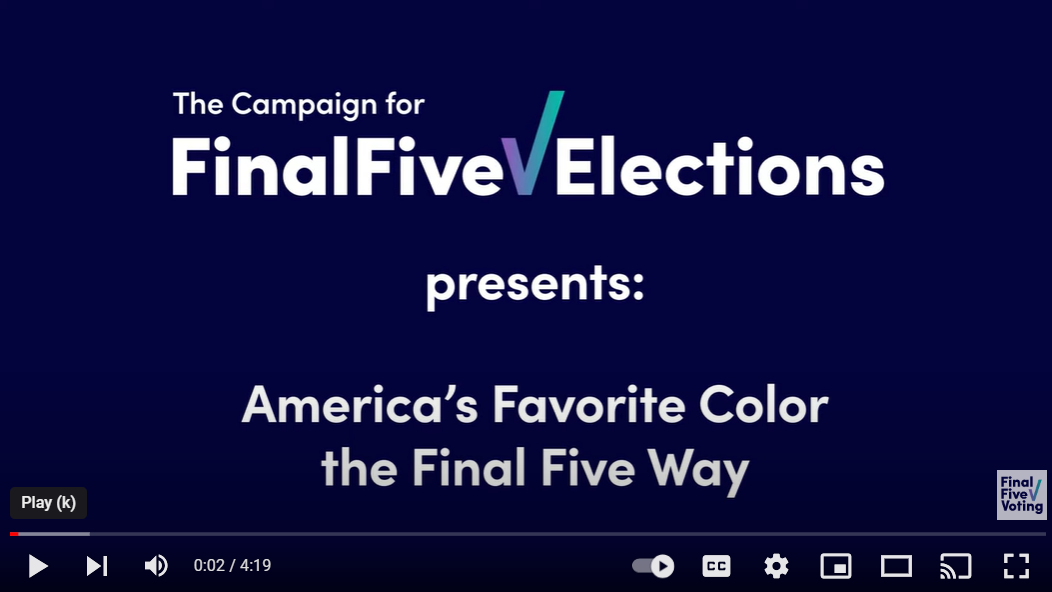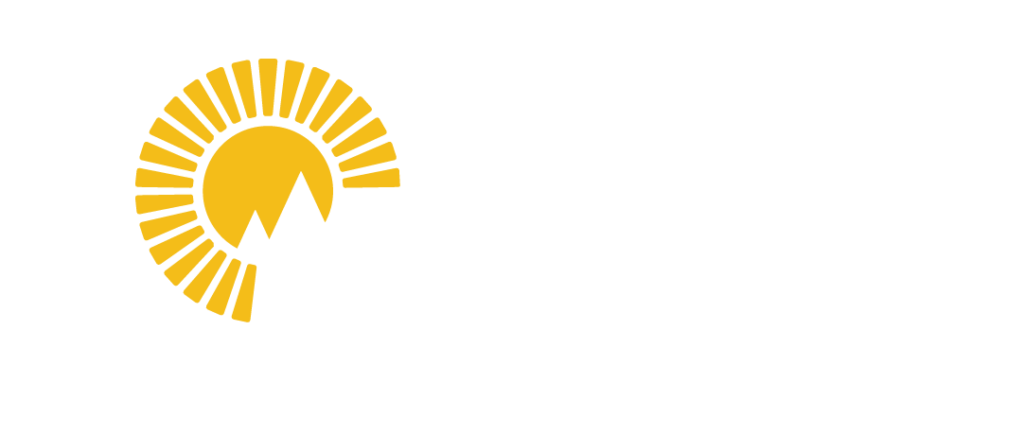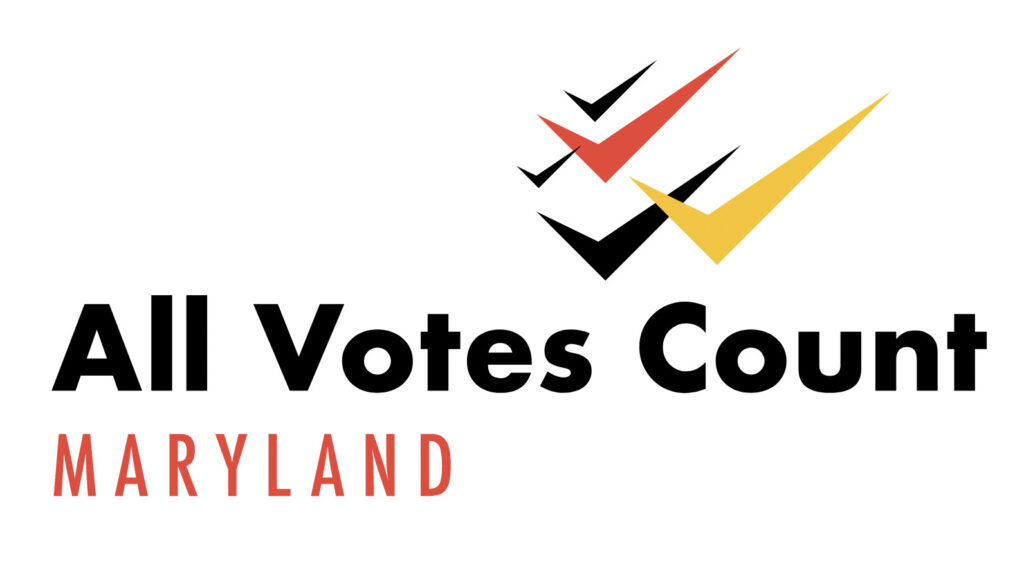

What You Need to Know About Final Five Elections
A Final Five Election is the combination of an open, single-ballot primary plus an instant-runoff general election among the top five finishers from the primary.
Final Five makes two simple changes to our Congressional elections:
Change #1 is replacing party primaries with a single-ballot, open preliminary election.
With FFE, when you vote in the preliminary election there’s only one ballot. Every candidate—no matter their party and including third parties and independents—appears on that single ballot. The top five finishers (not just one D and one R) advance to the general election.
Now, with five candidates, we benefit from a dynamic, diverse competition of ideas, visions, candidacies between the primary and the general.
Change #2 replaces plurality voting with instant-runoffs in the general election, to narrow the field of five to the final two and then, of course, the candidate with the majority support wins.
This system is exactly like a series of runoffs, but instead of having to keep coming back to the polls for another election, you cast all your votes at once using a ranked ballot.
Instant-runoffs (IRV) ensure we always elect the candidate with the most appeal to the greatest number of voters. And even more importantly, IRV dramatically lowers barriers to entry by eliminating the spoiler problem.
To summarize:
With Final Five Elections, every candidate appears on the same primary ballot and all voters have the right to participate regardless of party.
Then, the top five finishers compete in the November general election where you get to rank the five candidates from your most to least favorite.
You can rank as many or as few as you want.
The winner is determined using an instant runoff process where the candidate with the fewest votes is eliminated in each round until only the top two candidates remain, and the majority winner is clear.
Final Five Elections are not designed to change who wins. It’s designed to change what the winners have the freedom to do and are incented to do.
Legislators are incentivized to work across the aisle, deal powerfully with trade-offs, bargain effectively, and deliver consensus solutions to complex challenges.
Legislators are freed from the tyranny of the party primary, making them accountable to the majority of the November electorate, rather than only the narrow slice of voters who participate in party primaries. November general elections will always be competitive, whereas in 2020 the results of 83% of House elections were already determined by the summer party primary.
Barriers to entry are lowered for new and healthy competition. Increased competition through more new entrants incentivized elected officials to better serve their “customers” – the electorate.
We lift the prohibition on consensus and compromise while still maintaining the huge diversity of views, ideologies, candidates that reflect this country. FFV is not about electing moderates – it encourages creative, even fringe, thinking while also allowing elected officials to come together on solutions.
What You Need to Know About Final Five Elections
A Final Five Election is the combination of an open, single-ballot primary plus an instant-runoff general election among the top five finishers from the primary.
Final Five makes two simple changes to our Congressional elections:
Change #1 is replacing party primaries with a single-ballot, open preliminary election.
With FFE, when you vote in the preliminary election there’s only one ballot. Every candidate—no matter their party and including third parties and independents—appears on that single ballot. The top five finishers (not just one D and one R) advance to the general election.
Now, with five candidates, we benefit from a dynamic, diverse competition of ideas, visions, candidacies between the primary and the general.
Change #2 replaces plurality voting with instant-runoffs in the general election, to narrow the field of five to the final two and then, of course, the candidate with the majority support wins.
This system is exactly like a series of runoffs, but instead of having to keep coming back to the polls for another election, you cast all your votes at once using a ranked ballot.
Instant-runoffs (IRV) ensure we always elect the candidate with the most appeal to the greatest number of voters. And even more importantly, IRV dramatically lowers barriers to entry by eliminating the spoiler problem.
To summarize:
With Final Five Elections, every candidate appears on the same primary ballot and all voters have the right to participate regardless of party.
Then, the top five finishers compete in the November general election where you get to rank the five candidates from your most to least favorite.
You can rank as many or as few as you want.
The winner is determined using an instant runoff process where the candidate with the fewest votes is eliminated in each round until only the top two candidates remain, and the majority winner is clear.
Final Five Elections are not designed to change who wins. It’s designed to change what the winners have the freedom to do and are incented to do.
With Final Five Elections:
Legislators are freed from the tyranny of the party primary, making them accountable to the majority of the November electorate, rather than only the narrow slice of voters who participate in party primaries. November general elections will always be competitive, whereas in 2020 the results of 83% of House elections were already determined by the summer party primary.
Legislators are incentivized to work across the aisle, deal powerfully with trade-offs, bargain effectively, and deliver consensus solutions to complex challenges.
Barriers to entry are lowered for new and healthy competition. Increased competition through more new entrants incentivized elected officials to better serve their “customers” – the electorate.
We lift the prohibition on consensus and compromise while still maintaining the huge diversity of views, ideologies, candidates that reflect this country. FFE is not just about electing moderates, it encourages creative, even fringe, thinking while also allowing elected officials to come together on solutions.
Learn more about the Final Five Elections system here.
Read academic analyses of Final Five Elections here.
Keep up with the news on Final Five Elections here.
Final Five Elections Media
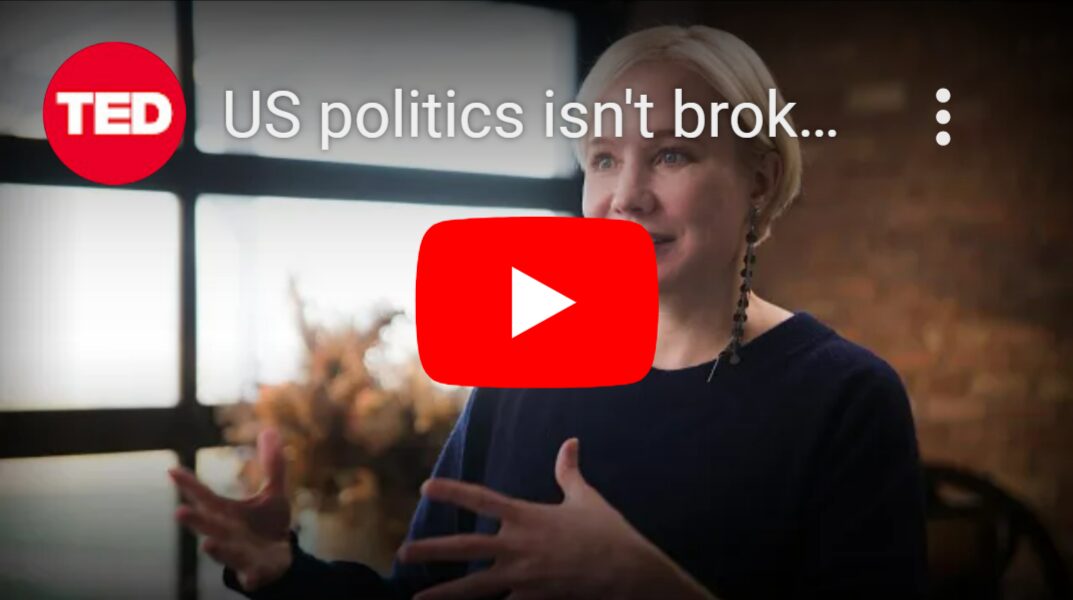
TED Talk
Katherine Gehl | Apr 20, 2021
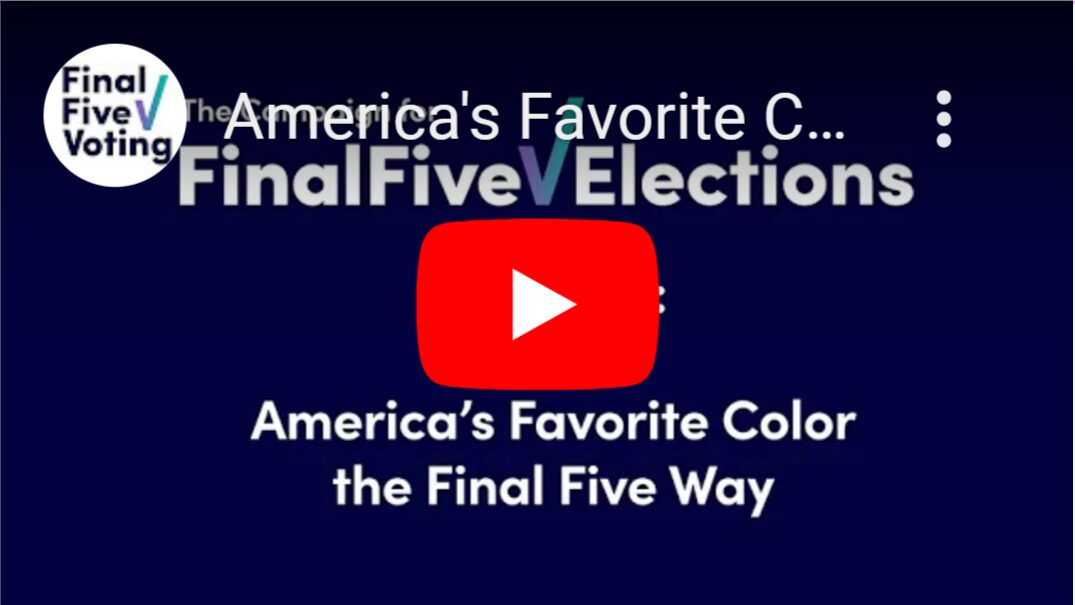
America's Favorite Color...The Final Five Way!
The Campaign for Final Five Elections | Jun 1, 2024
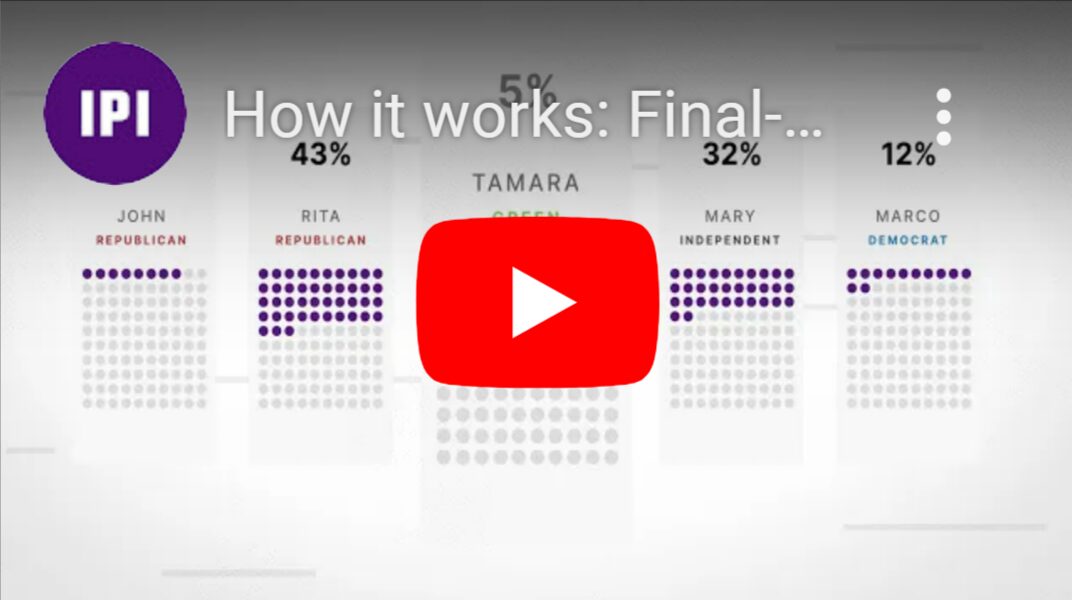
How it works
Institute for Political Innovation | Mar 3, 2021
Final Five Elections Media
TED Talk
Katherine Gehl | Apr 20, 2021
America's Favorite Color...The Final Five Way!
The Campaign for Final Five Elections | Jun 1, 2024
How it works
Institute for Political Innovation | Mar 3, 2021
Final Five Elections: Powerful AND Achievable
Article I of the Constitution gives every state’s voters the power to determine the rules for their own Congressional elections. Alaska has already chosen Final Four Elections (an early version of Final Five Voting), and campaigns for FFE are underway in multiple states across the country. Visit state campaign websites below.
Final Five Elections: Powerful AND Achievable
Article I of the Constitution gives every state’s voters the power to determine the rules for their own Congressional elections. Alaska has already chosen Final Four Elections (an early version of Final Five Elections), and campaigns for FFE are underway in multiple states across the country. Visit state campaign websites below.
Co-Founder Statement
We are founders of the Campaign for Final Five Elections. It’s likely surprising to see our names behind the same political cause because many of us enthusiastically support different candidates, different parties (or no parties) and different policies.
But, united by our love of country, we find agreements greater than differences.
Co-Founder Statement
We are founders of the Campaign for Final Five Elections. It’s likely surprising to see our names behind the same political cause because many of us enthusiastically support different candidates, different parties (or no parties) and different policies.
But, united by our love of country, we find agreements greater than differences.
Americans deserve a system that allows us to live up to the highest promise of our democracy.
The issues we face as a country are complex, and if we want sustainable consensus solutions, members of Congress have to put country ahead of party. The job of legislating is to negotiate and innovate to solve problems, and right now we have a voting system that prevents this from happening.
Americans deserve a system that allows us to live up to the highest promise of our democracy.
The issues we face as a country are complex, and if we want sustainable consensus solutions, members of Congress have to put country ahead of party. The job of legislating is to negotiate and innovate to solve problems, and right now we have a voting system that prevents this from happening.
November general election voters should choose who represents their states and districts. Winners of Congressional elections should not be a fait-accompli—as they now are far-too-often—after low-turnout primaries held months before the general election.
Competition in any industry drives innovation, results, and accountability. We need those elements in our political system, too.
November general election voters should choose who represents their states and districts. Winners of Congressional elections should not be a fait-accompli—as they now are far-too-often—after low-turnout primaries held months before the general election.
Competition in any industry drives innovation, results, and accountability. We need those elements in our political system, too.
It is for these reasons we support Final Five Elections—a new system for electing members of Congress—with a name inspired by the competitive excellence of basketball’s March Madness competition.
Final Five Elections are designed to change what the winners of our elections do—what they have the freedom to do (i.e., reach across the aisle, negotiate, innovate), what they’re incented to do (i.e., solve problems) and on whose behalf they’re doing it (i.e., a majority of November voters). Final Five Elections are strictly non-partisan and is not designed to change who wins (i.e., it is not intended to turn blue districts red or red districts blue).
We will keep our passions for our favorite candidates, parties, and policies. But we are joining forces to create a playing field that provides for best-of-the-best political competition in our beloved country— competition that will deliver better results for the American people.
As Founders of the Campaign for Final Five Elections, we are committed to strengthening our democracy and advancing the movement for Final Five Elections.
With gratitude,
The Founders of the Campaign for Final Five Elections
It is for these reasons we support Final Five Elections—a new system for electing members of Congress—with a name inspired by the competitive excellence of basketball’s March Madness competition.
Final Five Elections are designed to change what the winners of our elections do—what they have the freedom to do (i.e., reach across the aisle, negotiate, innovate), what they’re incented to do (i.e., solve problems) and on whose behalf they’re doing it (i.e., a majority of November voters). Final Five Elections are strictly non-partisan and is not necessarily designed to change who wins (i.e., it is not intended to turn blue districts red or red districts blue).
We will keep our passions for our favorite candidates, parties, and policies. But we are joining forces to create a playing field that provides for best-of-the-best political competition in our beloved country— competition that will deliver better results for the American people.
As Founders of the Campaign for Final Five Elections, we are committed to strengthening our democracy and advancing the movement for Final Five Elections.
With gratitude,
The Founders of the Campaign for Final Five Elections
Campaign Co-Founders
Chris Yeh
Blitzscaling Academy
Todd Connor
Veterans for Political Innovation
Austin Ramirez
Democracy Found
Larry Diamond
Hoover Institution
Glenn Nye
The Center for the Study of the Presidency & Congress
Kent Thiry
Let Colorado Vote
Mindy Finn
Citizen Data
Nick Troiano
Unite America
Timi & John Sobrato
The Sobrato Organization
Cara McCormick
Level the Playing Field
Patrick McGinnis
FOMOSapiens
Jonathan Baron
Baron Public Affairs
Campaign Co-Founders
Timi & John Sobrato
The Sobrato Organization
Cara McCormick
Level the Playing Field
Patrick McGinnis
FOMOSapiens
Jonathan Baron
Baron Public Affairs
Support the Campaign
Final Five Elections help ensure politicians are held accountable for delivering results that benefit the broadest section of their electorate.
Support the Campaign
Final Five Elections help ensure politicians are held accountable for delivering results that benefit the broadest section of their electorate.


The Campaign for Final Five Elections is a project of The Institute for Political Innovation.
The Campaign for Final Five Elections is a project of The Institute for Political Innovation.
